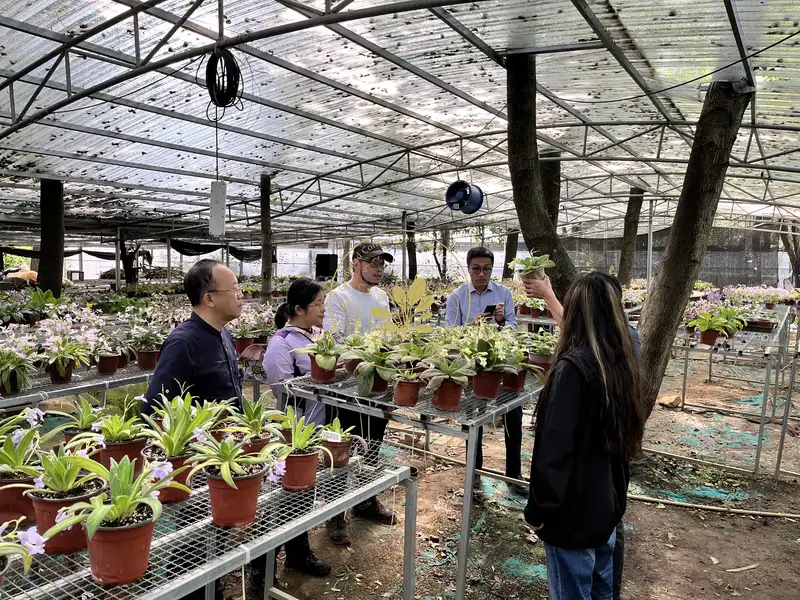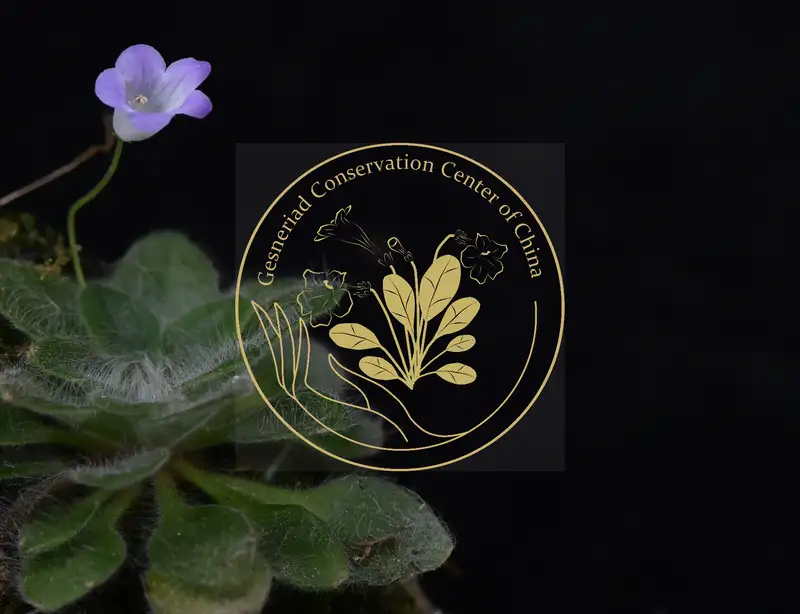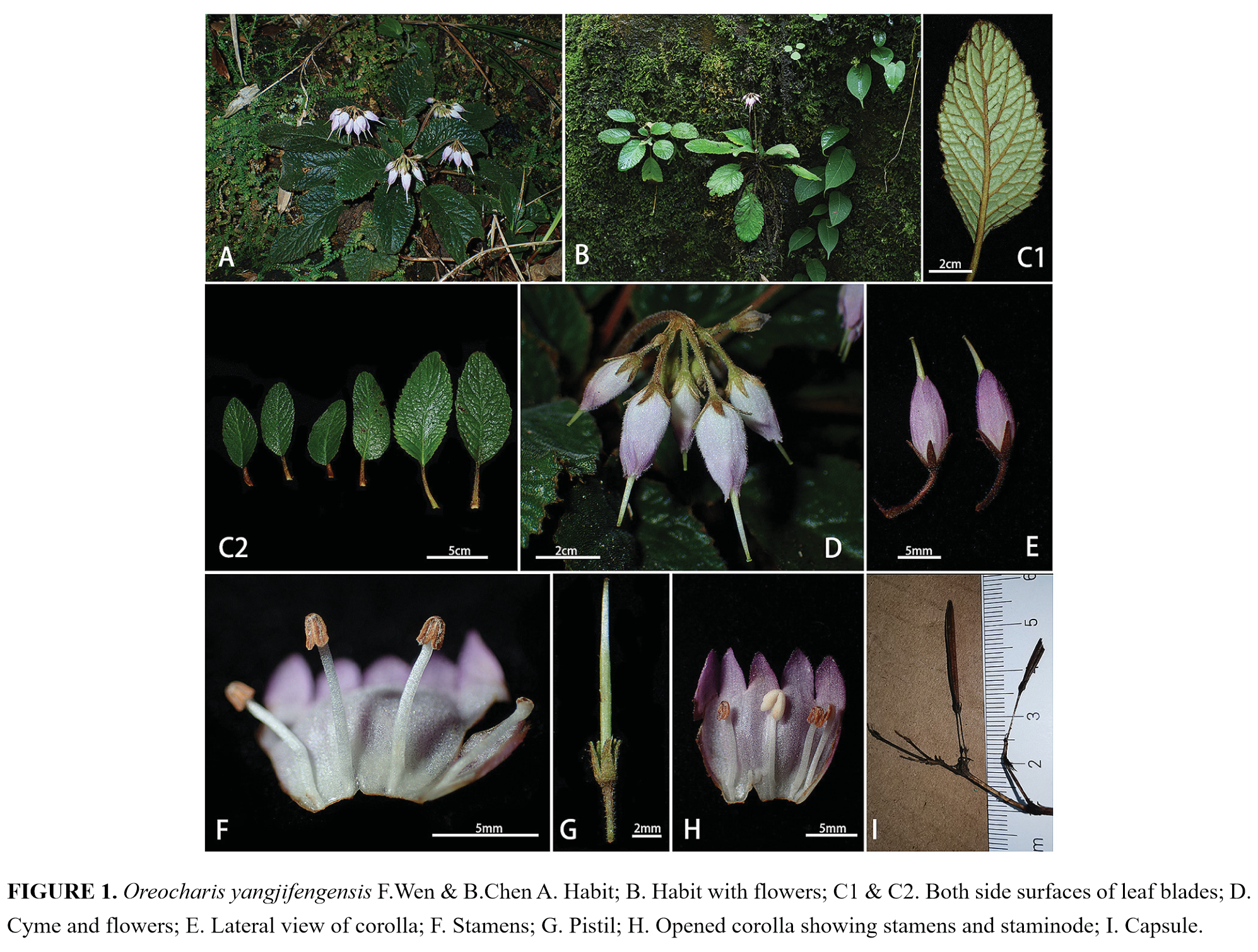No.10Prasanna N.S., Liu D.T., Saryan P., Duan S.Z. , Cai L. & V. Gowda
Didymocarpus sinoindicus (Gesneriaceae), a new speciesfrom India and China
Rheedea30(1): 135–142 (2020)
Journal of the Indian Association for Angiosperm Taxonomy
ABSTRACT
We describe a new species of Gesneriaceae,Didymocarpus sinoindicus N.S.Prasanna, Lei Cai & V.Gowda from India and China with detailedmorphological description, diagnostic characters,illustrations, and colour photographs. The new speciesis morphologically similar to D. oblongus Wall. exD.Don, D. hookeri C.B.Clarke, and D. adenocalyxW.T.Wang, but can be easily distinguished from themby its emarkable creamy-white to greenish-yellowsepals and petals and characteristic purple striations oncorolla lobes.
Original article link: https://dx.doi.org/10.22244/rheedea.2020.30.01.07
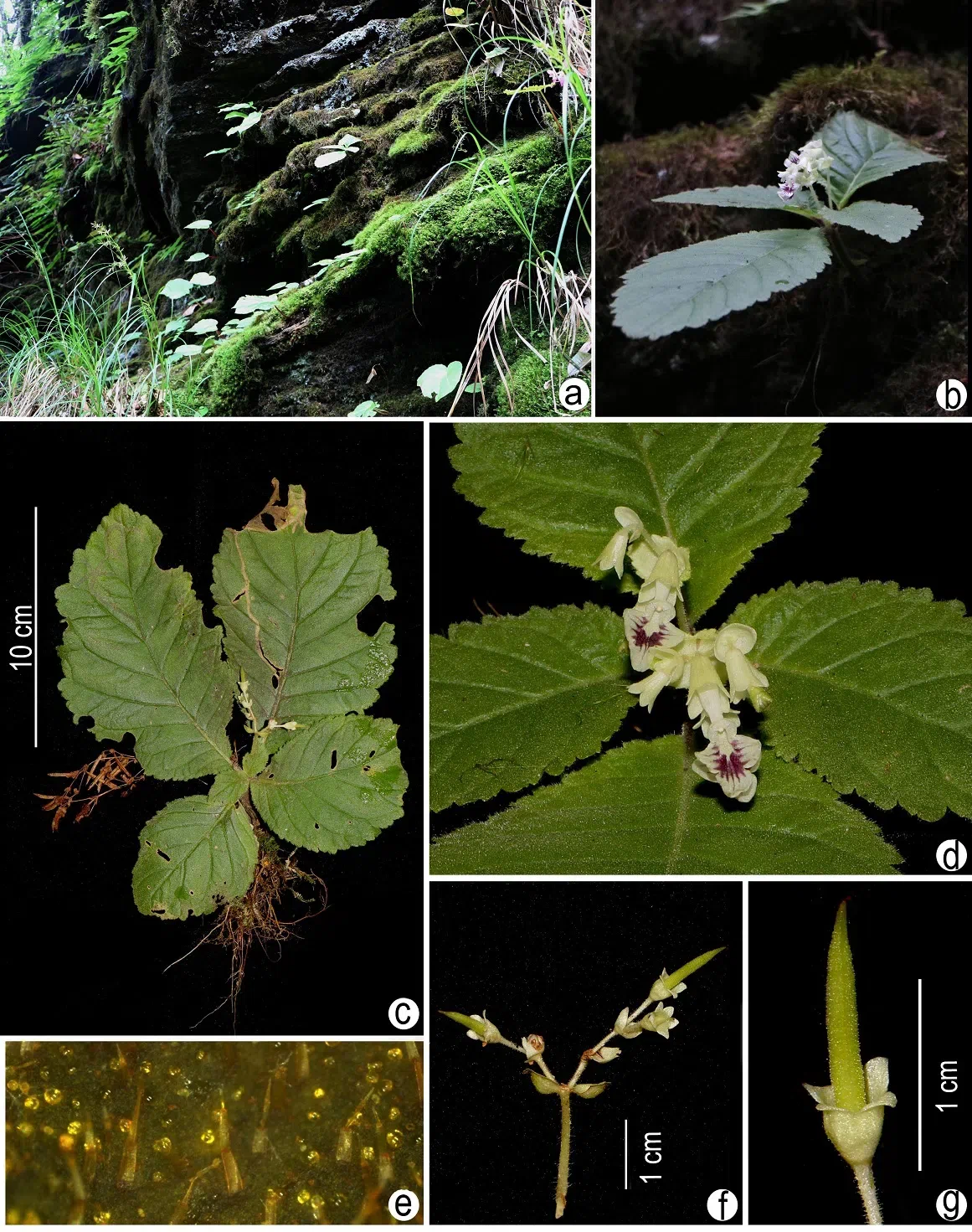
Fig. 1. Didymocarpus sinoindicus N.S.Prasanna, Lei Cai & V.Gowda in India: a. Habitat;b. Habit; c.Whole plant with inflorescence andinfructescence; d. Inflorescence; e. Glands on the abaxial surface of leaves; f. Cyme with fruits; g. Young fruit (photos by Preeti Saryan).
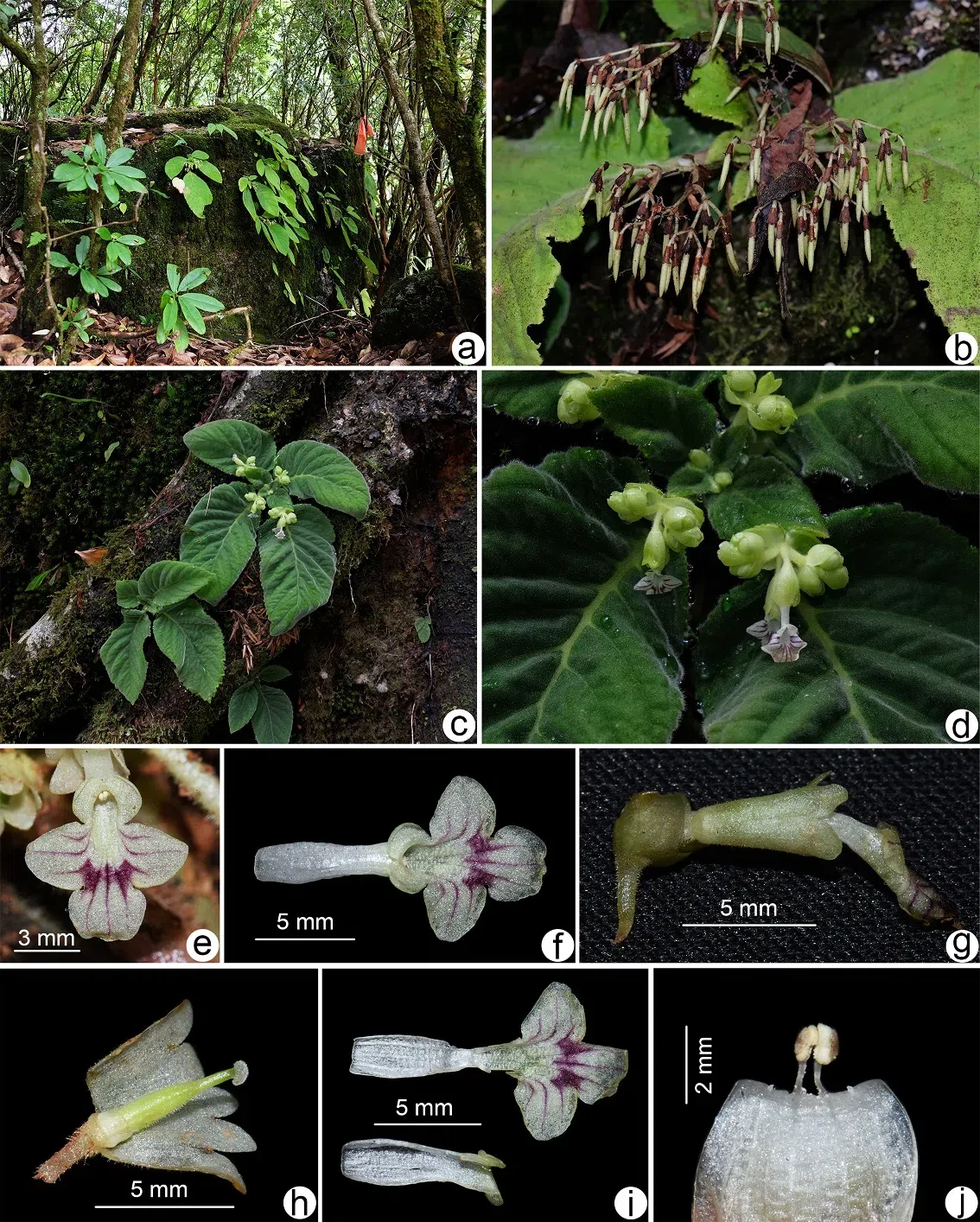
Fig. 2.Didymocarpus sinoindicus N.S.Prasanna, Lei Cai & V.Gowda in China:a. Habitat; b. Fruits; c. Plants with flowers and oldfruits; d. Inflorescence and adaxial leaf surface; e.Mouth of a flower; f. Front view of corolla; g. Lateral view of flower showing calyxand bracts; h. Pistil with calyx and disc; i. Opened corolla showing internal structure; j. Stamens and staminodes (photos by Lei Cai& De-Tuan Liu).
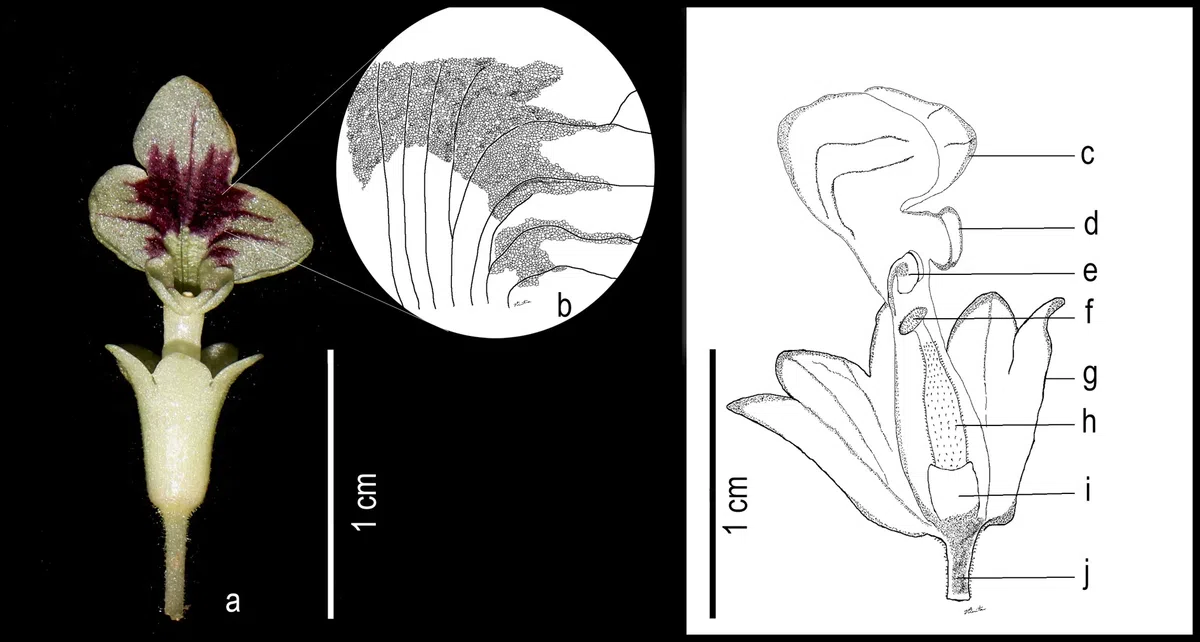
Fig. 3.Didymocarpus sinoindicus N.S.Prasanna, Lei Cai & V.Gowda: a. Flower; b. Blotch at the junction of the three lower lobes;c. Lower lobes; d. Upper lobes; e. Androecium; f. Stigma; g. Calyx; h. Ovary; i. Disc; j. Pedicel (photos by Preeti Saryan;illustration by Vinita Gowda).



